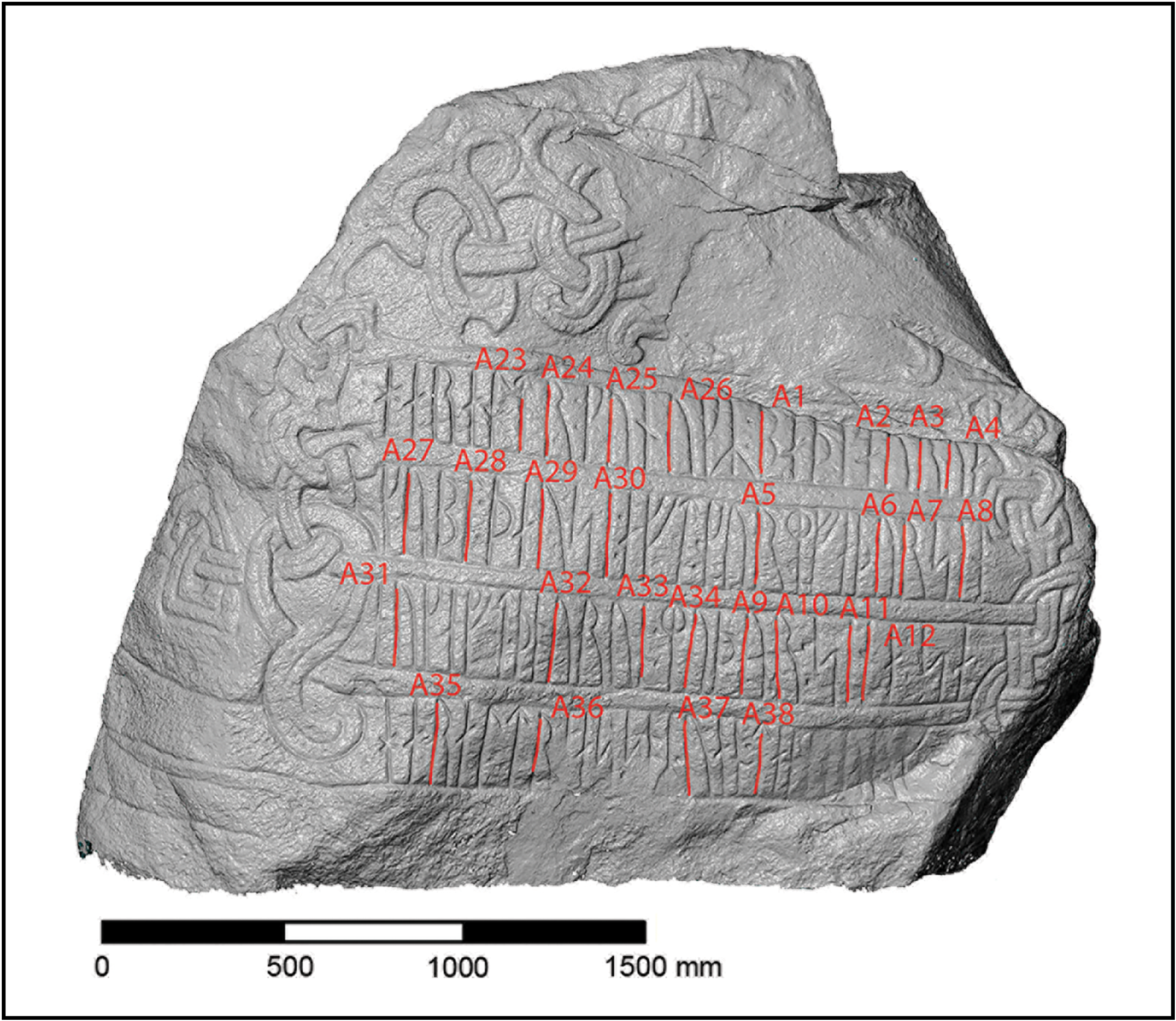https://sputnikglobe.com/20231013/1000-year-old-viking-runes-unearth-secrets-of-powerful-ancient-queen-1114186139.html
1,000-Year-Old Viking Runes Unearth Secrets of Powerful Ancient Queen
1,000-Year-Old Viking Runes Unearth Secrets of Powerful Ancient Queen
Sputnik International
Experts from the National Museum of Denmark have harnessed cutting-edge 3D scanning technology to decode enigmatic Viking runes etched over a millennium ago.
2023-10-13T23:48+0000
2023-10-13T23:48+0000
2023-10-13T23:44+0000
beyond politics
science & tech
denmark
vikings
runes
history
ancient history
https://cdn1.img.sputnikglobe.com/img/07e7/0a/0d/1114185804_0:310:769:742_1920x0_80_0_0_af601c8ad37fe96e6763a2bdf200070f.png
Archaeologists from Denmark and Sweden recently used 3D scans to probe the inscriptions on ancient Danish stones that have revealed an unexpected connection to a powerful Viking queen known as Thyra.The inquiry primarily focused on two sets of runestones, both dating back to the 10th century. The initial collection, known as the Jelling Stones, was closely associated with Harald Bluetooth, a renowned 10th-century Danish king recognized as the nation's creator. Yet, historical accounts had been frustratingly silent about Harald's parents, King Gorm and Queen Thyra.The second set of runestones, named the Ravnunge-Tue Stones after their rune-carver, offered a glimmer of insight into the royal family. Scholars have posited these stones were carved in homage to Queen Thyra, commissioned by Harald Bluetooth.Remarkably, the runes on the stones unequivocally designate Thyra as a "queen," signifying her authority in relation to Ravnunge-Tue, the rune-carver. Three-dimensional scans unveiled distinct patterns that function as the carver's personal signature within the runic engravings.Queen Thyra's name stands alone in the annals of Viking history, as "no other Viking man or woman in Denmark has been mentioned on that many runestones," emphasized Imer. The stunning revelation underscores her pivotal role in the unification of the realm under her son, Harald Bluetooth's rule.The findings were published on Wednesday in the journal Antiquity.
denmark
Sputnik International
feedback@sputniknews.com
+74956456601
MIA „Rossiya Segodnya“
2023
News
en_EN
Sputnik International
feedback@sputniknews.com
+74956456601
MIA „Rossiya Segodnya“
Sputnik International
feedback@sputniknews.com
+74956456601
MIA „Rossiya Segodnya“
national museum of denmark, viking runes, ancient viking queen, ancient vikings, king gorm, queen thyra, thyra mother of harald bluetooth, did vikings have queens, vikings in denmark
national museum of denmark, viking runes, ancient viking queen, ancient vikings, king gorm, queen thyra, thyra mother of harald bluetooth, did vikings have queens, vikings in denmark
1,000-Year-Old Viking Runes Unearth Secrets of Powerful Ancient Queen
Experts from the National Museum of Denmark have harnessed cutting-edge 3D scanning technology to decode enigmatic Viking runes etched over a millennium ago. The findings are poised to rewrite history books by spotlighting the pivotal role of a Danish queen in the formation of the Scandinavian nation.
Archaeologists from Denmark and Sweden recently used 3D scans to probe the inscriptions on ancient Danish stones that have revealed an unexpected connection to a powerful Viking queen known as Thyra.
The inquiry primarily focused on two sets of runestones, both dating back to the 10th century. The initial collection, known as the Jelling Stones, was closely associated with Harald Bluetooth, a renowned 10th-century Danish king recognized as the nation's creator.
Yet, historical accounts had been frustratingly silent about Harald's parents, King Gorm and Queen Thyra.
The second set of runestones, named the Ravnunge-Tue Stones after their rune-carver, offered a glimmer of insight into the royal family. Scholars have posited these stones were carved in homage to Queen Thyra, commissioned by Harald Bluetooth.
"We aimed to uncover if we could identify the same rune carver on some of these stones, linking the Ravnunge-Tue Stones with the Jelling stones. A connection would strongly suggest that all the stones pay tribute to the same influential figure: Thyra, mother of Harald Bluetooth," explained lead researcher Lisbeth M. Imer.
Remarkably, the runes on the stones unequivocally designate Thyra as a "queen," signifying her authority in relation to Ravnunge-Tue, the rune-carver. Three-dimensional scans unveiled distinct patterns that function as the carver's personal signature within the runic engravings.
Queen Thyra's name stands alone in the annals of Viking history, as "no other Viking man or woman in Denmark has been mentioned on that many runestones," emphasized Imer. The stunning revelation underscores her pivotal role in the unification of the realm under her son, Harald Bluetooth's rule.
The findings were published on Wednesday in the journal
Antiquity.



